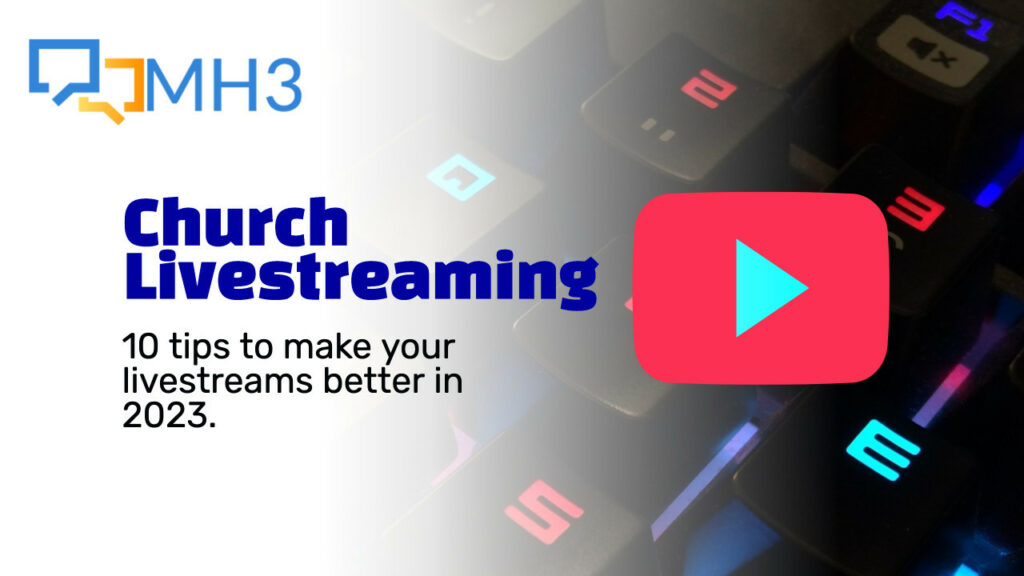Church live-streaming has become an increasingly popular way for churches to connect with their congregations and share their services and events with a wider audience. Whether it’s a Sunday service, a midweek bible study, or a special event, live-streaming allows churches to reach people who may not be able to attend in person due to distance, health, or other factors.
However, live-streaming can also be a complex and technical undertaking, especially for churches that are new to it or have limited resources. In this blog, we’ll cover some best practices for church live-streaming to help you create a successful and meaningful experience for your viewers.
- Determine your goals: Before you start live-streaming, it’s important to have a clear idea of what you want to achieve with your streams. This could include reaching a wider audience, engaging with people who can’t attend in person, or sharing your message with a specific group of people. Understanding your goals will help guide your decisions about what to stream and how to stream it.
- Choose the right platform: There are many different platforms available for live-streaming, including YouTube, Facebook, and Twitch. Each platform has its own unique features and audience, so it’s important to choose the one that best fits your needs and goals. For example, YouTube is a great platform for long-form content, while Facebook is more geared towards shorter, more interactive streams.
- Invest in good equipment: The quality of your live-stream depends largely on the equipment you use. While you don’t need to have the latest and greatest gear, it’s important to have equipment that is reliable and produces good-quality audio and video. This includes a good microphone, a webcam or camera, and a reliable internet connection.
- Use a consistent setup: Having a consistent setup for your live-streams helps create a sense of familiarity for your viewers and makes it easier for you to stream. This includes using the same camera angles, lighting, and background for each stream. You should also have a designated streaming area that is free from distractions and has good lighting and acoustics.
- Engage with your audience: One of the benefits of live-streaming is the ability to interact with your viewers in real-time. Encourage your audience to ask questions and make comments, and be sure to respond to them in a timely and engaging manner. You can also use features such as live polls and live chat to add an interactive element to your stream.
- Promote your stream: In order for your live-stream to be successful, you need to have an audience. Be sure to promote your stream on social media, your website, and other platforms to let people know when and where to watch. You can also create a trailer or teaser video to generate interest in your stream.
- Test your setup: Before you start streaming, it’s important to test your equipment and make sure everything is working properly. This includes testing your internet connection, your microphone, and your camera. You should also test your streaming software to ensure that it’s working correctly and that you know how to use all of its features.
- Be professional: Live-streaming is a public platform, and it’s important to present yourself in a professional manner. This includes dressing appropriately, behaving professionally, and avoiding inappropriate language or behavior.
- Have a backup plan: While it’s important to plan ahead and be prepared, things can still go wrong during a live-stream. It’s always a good idea to have a backup plan in case of any unexpected issues, such as technical problems or internet connectivity issues. This could include having backup equipment on hand, having a backup location to stream from, or having a backup stream on a different platform.
- Analyze and improve: After your live-stream is over, it’s important to take some time to analyze the data and feedback from your stream. This can help you identify any areas for improvement and make adjustments for future streams. You can use tools such as analytics, surveys, and viewer feedback to help you understand what worked well and what didn’t, and use this information to improve your future streams.
Church live-streaming can be a powerful and effective way to connect with your congregation and share your message with a wider audience. By following these best practices, you can create a successful and meaningful live-streaming experience for both you and your viewers.



